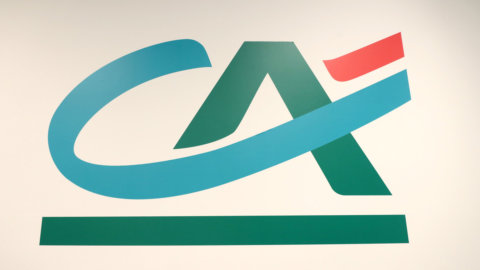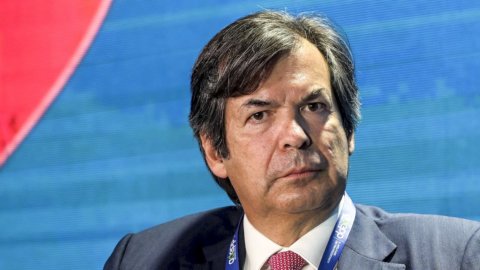Eni reduces in 2016 the red at 1,464 billion from the net loss of 8,778 billion in 2015. This was announced by the group, specifying that in the fourth quarter the net profit amounted to 340 million, while the adjusted net profit amounted to 460 million, supported by the robust recovery of E&P and the adjusted net result for the year substantially at breakeven (-340 million).
THEadjusted operating profit for the year amounted to 2,32 billion, down by 48% mainly due to the scenario (-3,3 billion) and the problems in Val d'Agri. Adjusted operating profit for the fourth quarter amounted to €1,29 billion, +103% compared to the fourth quarter of 2015. The 2016 dividend is confirmed at €0,80 per share, of which €0,40 already paid on account.
Furthermore, Eni is back on the market with issues intended for institutions for a maximum of 2 billion euro by next year. The group of the six-legged dog explains that "the possible issue of one or more bond loans, to be placed with institutional investors, for a total amount not exceeding 2 billion euros or the equivalent in another currency, to be issued in one or more tranches by 31 December 2018”.
Finally, the Board of Directors convened for on 13 April 2017 the Shareholders' Meeting, in ordinary session, in a single call, to resolve on the approval of the 2016 financial statements and on the allocation of profits, on the appointment of corporate bodies, on the 2017-2019 long-term incentive plan and on the disposal of treasury shares to service of the plan and, on an advisory basis, on the section of the Remuneration Report relating to the Remuneration Policy.
In particular, the 2017-2019 long-term incentive plan, approved by the Board of Directors at the meeting of February 28, 2017, may determine the assignment of Eni treasury shares - originating from purchases made in implementation of treasury share buyback plans in previously approved by the Company – up to a maximum total number of 11 million shares.
After the accounts, it also arrives the 2017-2020 strategic plan. Considering the transformation process of the Group and the objectives defined in the plan, Eni intends to confirm a dividend for 2017 of 0,8 euro per share paid entirely in cash. The distribution policy will be progressive, in line with earnings growth and the variability of the scenario.
Under the plan, the main drive will continue to come from upstream where hydrocarbon production is expected to grow by 3% per year in the period 2017-2020, and will mainly be achieved through the ramp-up and start-up of new projects and production optimisation, which will give a total contribution of approximately 850 barrels of oil equivalent per day in 2020.
Exploration remains a key driver of the company's value growth. Over the period of the plan, Eni expects new discoveries for 2-3 billion barrels of oil equivalent, almost double the discoveries of the previous plan, thanks to the drilling of about 120 wells in over 20 countries. This will be possible despite the 10% reduction in exploration CAPEX. The average break-even for new projects is around $30 a barrel.
IEni's G&P sector will reach break-even in 2017, and will be profitable later, thanks to the alignment of gas supply contracts to market conditions and the reduction of logistics costs, while the EBIT from 2019 will be over 600 million euros.
To address the structural weaknesses of the refining sector, Eni's goal is to reduce the breakeven margin to approximately 3 dollars a barrel by 2018. All this will generate a cumulative operating cash flow of 3,3 billion euros, and an increase in EBIT of 300 million euro in the period of the plan, on a constant 2017 scenario.
In the Chemicals sector, Eni expects to achieve an Ebit of around 300 million a year and a cumulative operating cash flow of 1,2 billion euros.
The four-year investment plan is focused on high-value, fast-return projects and the development of conventional projects. CAPEX of approximately €31,6 billion represents an 8% reduction, at a constant exchange rate, compared to the previous Plan, and mainly concerns the Upstream portfolio, the rescheduling of project activities, and the renegotiation of contracts. This reduction was partially offset by the greater commitment of approximately 500 million in other sectors, mainly in renewable energy, an increasingly important element in Eni's decarbonisation strategy. Furthermore, uncommitted CAPEX represents around 55% of total investments in 2019-2020, and ensures Eni's portfolio great flexibility in the event that the oil price scenario should turn negative again. The new disposal plan aims to achieve around €5-7 billion mainly through the dilution of exploration assets, in line with our dual exploration strategy.
In conclusion, according to Eni's plans, this plan will allow for higher cash generation, through the construction of a high margin portfolio thanks to material and conventional resources, design-to-cost operations and high value assets.




